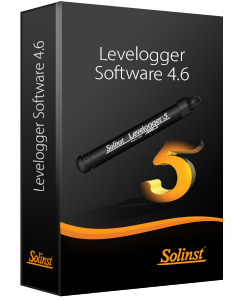What software features are available for my monitoring needs?
- The Levelogger 5 and Levelogger 5 LTC can be programmed using Linear, Event-based, or a Customized Schedule.
- Linear: refers to a set time interval between data collection. The sample rate can be set as fast as 0.125 seconds to 99 hours. This method is commonly used for both short term and long term monitoring, respectively. The desired sampling rate is based on how much data is required in the project specifications.
- Event-based: allows the user to define a sampling interval (similar to the linear mode) however, the Levelogger will only record if the parameter value has changed by a defined threshold from the last reading. Event-based sampling can be set for specific changes in water level, temperature, or conductivity. This sampling mode is ideal for remote monitoring when only significant events are to be recorded.
- Schedule: allows you to set a number of time intervals, each with its own defined sampling rate. This sampling mode is ideal for aquifer tests (slug, pumping, recovery or step) where a fast sampling rate is used at the beginning and/or end of the test to capture the draw-down and recovery. The sampling rate can be gradually decreased over time (similar to logarithmic sampling).
Is barometric pressure important?
- Yes. All Leveloggers measure total or absolute pressure. When the Levelogger is submerged, it is recording a combination of barometric pressure + water pressure. The actual water level is obtained by removing barometric pressure effects.
- Solinst recommends the use of the Barologger in tandem with the submersible Leveloggers. The Levelogger software includes a Data Wizard, which guides the user through the automated process of barometric compensation of their data.
- See Technical Bulletin: Barometric Compensation and the Importance of Barometric Data
What if I do not have a Barologger? (How to conduct manual barometric compensations)
- When the Levelogger is submerged, it is recording the combination of barometric pressure + water pressure. Locally collected weather data can be used to barometrically correct the Levelogger data if data from an on-site Barologger is not available.
- See Technical Bulletin: Barometric Compensation and the Importance of Barometric Data
How many Barologgers do I need?
- As a rule of thumb, one Barologger for a 30 km (20 mile) radius and/or every 300 m (1000 ft) change in elevation should be sufficient to capture local variations in barometric pressure.
Should I consider the altitude or elevation of my deployed dataloggers?
- Yes. Water column equivalent pressure decreases with an increase in altitude at a rate of approximately 1.2:1000 in the lower atmosphere below 5000 m (16,400 ft). This equates to about 0.5 psi per 1000 ft increase in elevation (37 cm of water column height).
- For the Levelogger 5 and Edge Series dataloggers, compensation can be done post data collection using the Data Wizard in the Levelogger Series Software (4.5 and up).
- See Blog Post: Accounting For Altitude When Compensating Levelogger Data
Should I take manual water level measurements?
- Yes, Solinst strongly recommends that manual water level measurements be taken during the monitoring period. The Levelogger software allows the user to enter manual water level measurements to field zero the data with known values. This practice helps to ensure the accuracy of the data and also allows the user to change the datum reference point for the data set.
- If the reference datum or measuring point (e.g. top of well casing) is above water level, the field zero (measure depth to water) must be input as a positive value. If the reference datum is below water level (e.g. artesian condition), a negative value is input. The date and time of measurement of the reference datum must be recorded and input to complete the adjustment.




